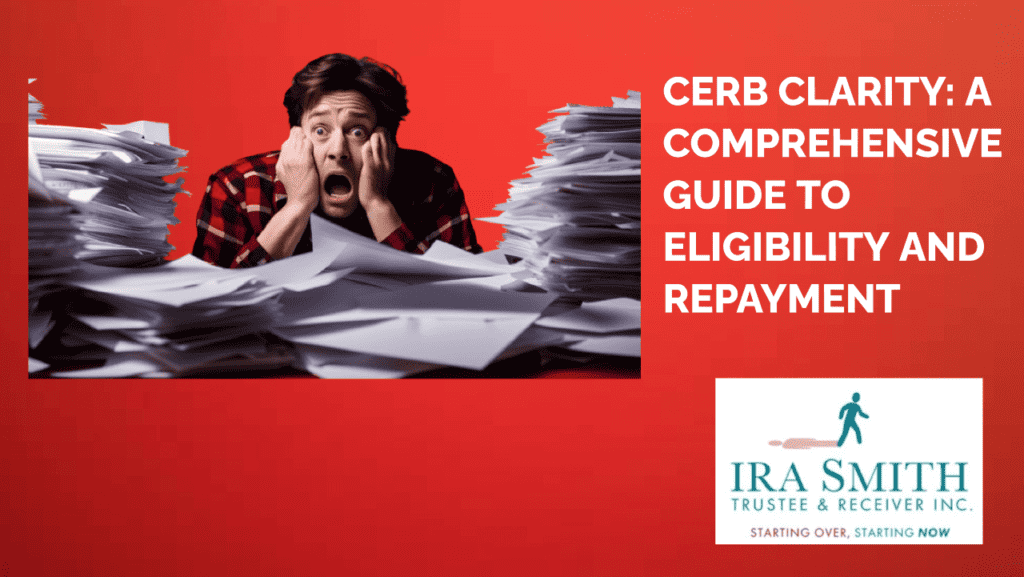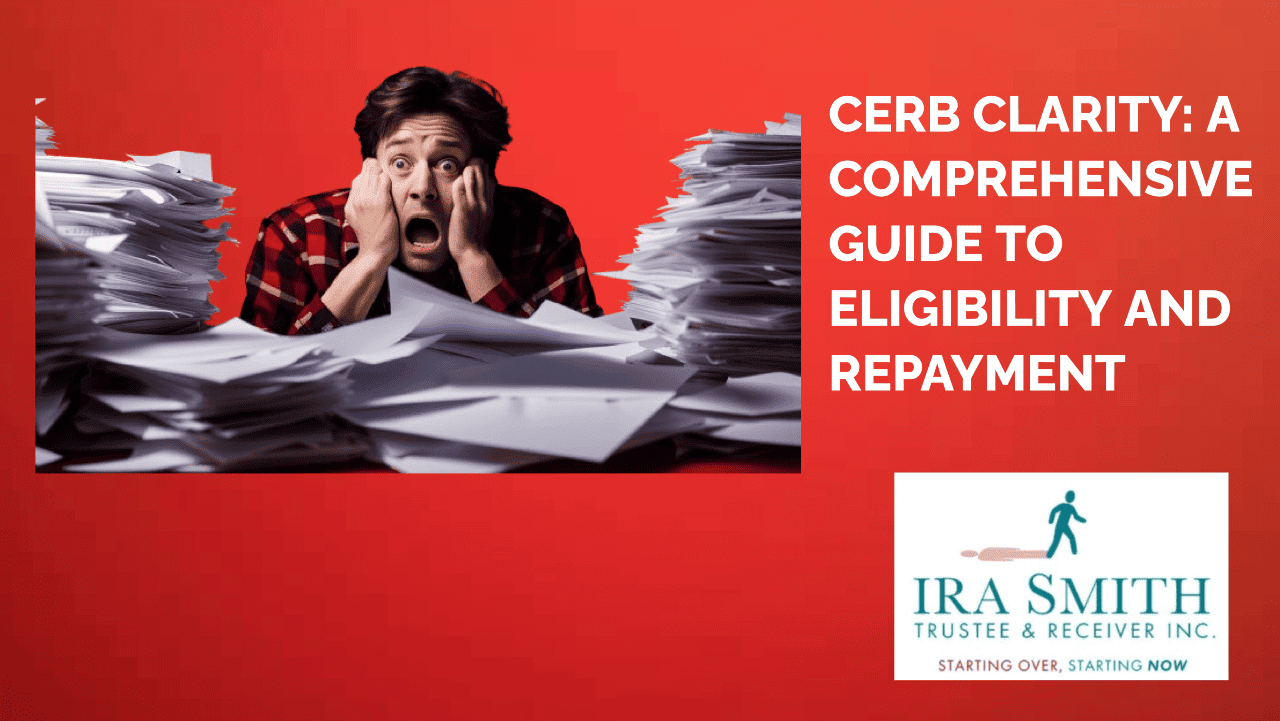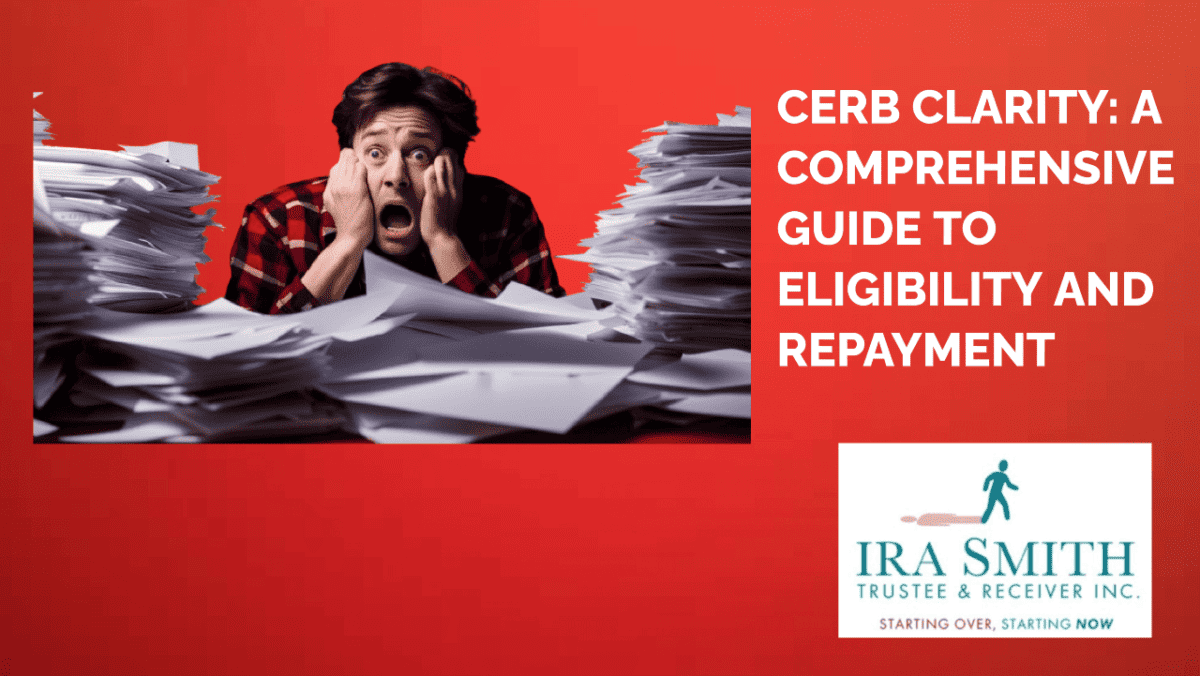Overview of the Canada Emergency Response Benefit
In the unprecedented times of the pandemic, one of Canada’s COVID-19 Economic Response Plan by PM Justin Trudeau and the Federal Government was the rolling out of the Canada Emergency Response Benefit (CERB) to provide financial aid to those affected by the COVID-19 pandemic. However, the eligibility requirements and repayment process have left many Canadians confused and frustrated.
In this Brandon’s Blog, we will dive deep into the intricacies of CERB eligibility and repayment, providing you with a comprehensive guide to navigate through the confusion. Let’s unravel the mysteries surrounding this together!
Explanation of what CERB was
The CERB has been a source of confusion for many Canadians, particularly when it comes to eligibility and repayment. Despite efforts to clarify the rules, there is still a lack of understanding among the public.
The first step towards clarity is understanding whether you were eligible for this benefit program. The program was designed to support individuals who lost their jobs or experienced a significant reduction in income due to the pandemic. However, the program was rolled out so fast that even those charged with administering the program did not fully understand the eligibility requirements.
With so many government civil servants not understanding the program, no wonder that ordinary Canadians were and are still uncertain about their eligibility status. In this section, we will break down the eligibility criteria, providing you with a clear understanding of who qualified for it and who did not.
Understanding Eligibility Requirements for CERB
Many Canadians are still facing uncertainty and confusion regarding their eligibility for the CERB application process. The ever-changing criteria and requirements had left individuals unsure about whether they qualified for this crucial financial assistance. Let’s delve into the key points causing confusion among applicants. The eligibility requirements were:
- Employment Status: To be eligible for CERB, you must have stopped working or experienced a significant reduction in your employment or self-employment income due to COVID-19. This includes individuals who have been laid off, furloughed, or had their business operations suspended.
- Income Threshold: The income requirement was that it must have been at least $5,000 in the previous 12 months or 2019. This income can come from employment, self-employment, or certain benefits related to maternity or parental leave.
- Residency Requirement: You must be a resident of Canada and have a valid Social Insurance Number (SIN) to qualify. Non-residents, temporary workers, and international students were not eligible.
- Exhaustion of Other Benefits: If you were already receiving other benefits, such as Employment Insurance (EI), you were not eligible for CERB. However, if you had exhausted your EI benefits, you could have been eligible.
Purpose of providing financial assistance during the COVID-19 crisis
The benefit was rolled out quickly by PM Justin Trudeau and his Federal Government and there was a lot of confusion about who was eligible for it. It was created to help those in Canada who the COVID-19 pandemic directly impacted. The program provided financial assistance to employees and self-employed workers. The benefit was worth a maximum of $2,000. Eligibility periods were every 4 weeks for up to four months.
The issue that troubles me is that the benefit was mostly paid to people who otherwise would not have been able to afford rent or food during their eligibility periods. The CERB benefit money was spent immediately and a long time ago. So if Canada Revenue Agency (CRA) and Service Canada have now determined that some people should not have gotten that benefit, what are those people supposed to do if CRA demands the money back?
Criteria for Eligibility Not Clearly Communicated
The criteria for qualifying for CERB have been subject to changes and updates by the Federal Government since the program’s inception until it closed. While the intention behind those adjustments may have been to accommodate a broader range of individuals in need, the frequent modifications have created additional confusion. Applicants struggled to keep up with the evolving requirements, making it challenging for them to determine if they were eligible for the benefit.
Moreover, the language used to communicate the eligibility criteria was complex and difficult for the average person to comprehend. The technical jargon and legal terms used in official documents and announcements further exacerbated the confusion, leaving many applicants feeling overwhelmed and uncertain about their eligibility status.
The shifting landscape of eligibility requirements added another layer of complexity for Canadians seeking financial support. As the government responded to changing economic conditions and societal needs, the criteria for qualifying were adjusted to reflect these shifts. While these changes were intended to ensure that those most affected by the pandemic received assistance, they also resulted in confusion among applicants.
For instance, updates to the eligibility criteria regarding income thresholds and employment status left many individuals questioning whether they still qualified for CERB. The evolving nature of these requirements meant that what may have been true one week could be outdated the next, creating challenges for applicants trying to navigate the system.
The confusion surrounding eligibility continues to be a significant issue impacting many Canadians who needed financial assistance during those uncertain times. The reason it continues is because CRA is now demanding repayment from many Canadians alleging that they never qualified for it in the first place.
Clear and transparent communication of the criteria, consistent updates on changes, and accessible language are essential to help individuals understand their eligibility status and navigate the application process effectively.
Understanding CERB Repayment and its Real-Life Challenges
While CERB provided much-needed financial relief to millions of Canadians, it is crucial to understand that the money received through the program was not a grant but a taxable benefit. This means that it needed to be included in each recipient’s income tax return for the taxation year it was received. Failure to do so results in serious consequences. Let’s delve into the repayment process as that was also not properly communicated.
- Repayment Deadline: The original deadline for repaying CERB was December 31, 2022. It was essential to plan your finances accordingly to meet this deadline and avoid any penalties or interest charges. As mentioned above, the problem was that everyone used the funds for rent and food. They did not have the money to repay.
- Repayment Options: The CRA provides various repayment options to make the process easier for Canadians. You can repay the amount in full, in installments, or through your income tax return. It is crucial to choose the option that best suits your financial situation. However, at this stage, if not repaid immediately upon CRA advising of ineligibility, penalty and interest will be added to the amount paid. This is causing much hardship to many Canadians today.
- Avoiding Misunderstandings: Many Canadians have found themselves in a situation where they received the benefit without realizing they were ineligible. CRA is now demanding repayment to rectify the situation.

Answers to the CERB Repayment FAQs
Q: What are some common issues people are facing when it comes to repaying the CERB?
A: Some common issues people face when repaying the CERB include confusion about eligibility criteria, difficulties navigating the repayment process, challenges in understanding tax implications, and concerns about financial strain due to the repayment amount. Additionally, delays in receiving communication from the government regarding repayment arrangements and lack of clarity on repayment deadlines are causing stress and uncertainty among recipients.
Q: How is the government addressing the repayment problems faced by Canadians who received the CERB?
A: The Canadian government has implemented various measures to address the repayment issues faced by Canadians who received the CERB. This includes allowing individuals to set up payment plans, extending the deadline for repayment, and providing flexibility in terms of repayment options. Additionally, the government has introduced measures to waive interest charges on outstanding balances for a certain period and has simplified the process for individuals who may have difficulty repaying the benefit. These efforts aim to alleviate the financial burden faced by Canadians and ensure a smoother repayment process.
Q: Can I appeal a decision regarding the CERB Repayment?
A: Yes, you can appeal a decision regarding the Canada Emergency Response Benefit Repayment by contacting the Canada Revenue Agency and providing any relevant documentation or information to support your appeal. It is recommended to review the specific reasons for the repayment request and provide a clear explanation or evidence to support your case during the appeal process. You will need documents to prove your position and may require professional advice from a tax accountant or tax lawyer.
Q: Are there any options available for individuals who are struggling to repay the CERB due to financial difficulties?
A: Individuals who are struggling to repay the benefit due to financial difficulties can contact the CRA to discuss repayment options. The CRA may be able to work out a payment plan or provide assistance based on individual circumstances. It is important to communicate with the CRA as soon as possible to avoid any penalties or further financial burden.
Q: What are the consequences for individuals who are unable to repay the CERB on time?
A: Individuals who are unable to repay the CERB on time may face consequences such as having to pay penalties or interest on the overdue amount, having their tax refunds withheld by the government, or being subject to legal action to recover the debt. It is important to communicate with the Canada Revenue Agency if you are unable to make payments on time to explore potential options for repayment.
Q: What are the acceptable methods for repaying the Canada Emergency Response Benefit?
A: As of now, the CRA has not announced specific repayment methods. However, individuals who have received the benefit but are not eligible or have received more than they were entitled to will be required to repay it. The CRA may provide further guidance on repayment methods in the future, but for now, individuals can contact the CRA to discuss repayment options.
It is just like paying any other amount to CRA. You can do so online, at your bank or by mailing a cheque to CRA. Make sure you include the payment advice stub with your payment and write your social insurance number and how the payment should be directed on the back of your cheque or in the appropriate boxes if paying online.
Q: Can I access financial counselling services for assistance with CERB repayment?
A: Yes, you can access professional advice in the form of financial counselling services for assistance with repayment. Many non-profit organizations and financial institutions offer free counselling services to help individuals navigate their finances and manage any debt repayment, including assistance with repaying CERB funds. It is recommended to reach out to these organizations for personalized guidance on your specific situation.
Q: Can I file either a consumer proposal or bankruptcy to eliminate the CERB repayment debt demanded by the CRA?
A: You can include the CERB repayment debt in a consumer proposal or bankruptcy, but it is advisable to seek professional advice from a licensed insolvency trustee in Canada to understand the specific implications and requirements of each option to your unique financial situation. Each individual’s financial situation is unique, so it’s crucial to receive personalized guidance on the best course of action to address the this repayment debt, your other debts and the effect on your assets.
We have helped several individuals eliminate their CERB repayment debt through both successful consumer proposals and bankruptcy.
CERB Conclusion
The Federal Government has taken steps to address confusion surrounding this program by updating guidelines, improving communication, and providing resources for repayment assistance. However, the CERB part of PM Justin Trudeau’s Canada’s COVID-19 Economic Response Plan seems to be extending the confusion and angst that existed during the COVID-19 crisis itself.
Navigating the complexities of eligibility and repayment is overwhelming, but with the right information, you can ensure a smooth process. By understanding the eligibility criteria and repayment options, you can avoid confusion and potential financial hardships in the future. Remember, it is always better to be proactive and seek clarification if you have any doubts regarding your CERB eligibility or repayment status. Together, we can navigate the confusion and emerge stronger on the other side. Stay informed, stay compliant, and stay financially secure.
Individuals and business owners must take proactive measures to address financial difficulties, consumer debt and company debt and promptly seek assistance when necessary. It is crucial to recognize that financial stress is a prevalent concern and seeking help is a demonstration of fortitude, rather than vulnerability. Should you encounter challenges in managing your finances and find yourself burdened by stress, do not delay in pursuing aid.
Revenue and cash flow shortages are critical issues facing people, entrepreneurs and their companies and businesses with debt problems that are in financial distress. Are you now worried about just how you or your business are going to survive? Are you worried about what your fiduciary obligations are and not sure if the decisions you are about to make are the correct ones to avoid personal liability? Those concerns and more associated with your company debt are obviously on your mind.
The Ira Smith Team understands these financial health concerns. More significantly, we know the requirements of the business owner or the individual who has way too much financial debt. You are trying to manage these difficult financial problems and you are understandably anxious.
It is not your fault you can’t fix this problem on your own and it does not mean that you are a bad person. The pandemic has thrown everyone a curveball. We have not been trained to deal with this. You have only been taught the old ways. The old ways do not work anymore.
The Ira Smith Team uses innovative and cutting-edge methodologies, to adeptly navigate you through the intricacies of your financial challenges, ensuring a resolution to your debt-related predicaments without resorting to the rigours of the bankruptcy process. We can get you debt relief now! We have helped many entrepreneurs and their insolvent companies who thought that consulting with a Trustee and receiver meant their company would go bankrupt. On the contrary. We helped turn their companies around through financial restructuring.
We look at your whole circumstance and design a strategy that is as distinct as you are. We take the load off of your shoulders as part of the debt settlement strategy we will draft just for you.
The Ira Smith Trustee & Receiver Inc. team understands that people facing money problems require a lifeline. That is why we can establish a restructuring procedure for you and end the discomfort you feel.
Call us now for a no-cost consultation. We will listen to the unique issues facing you and provide you with practical and actionable ideas you can implement right away to end the pain points in your life, to begin your debt-free life, Starting Over, Starting Now.









